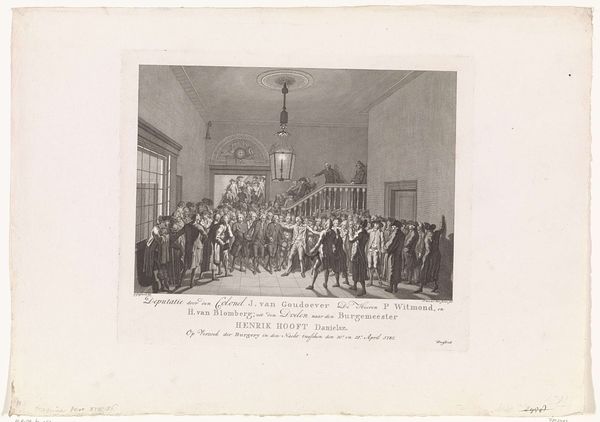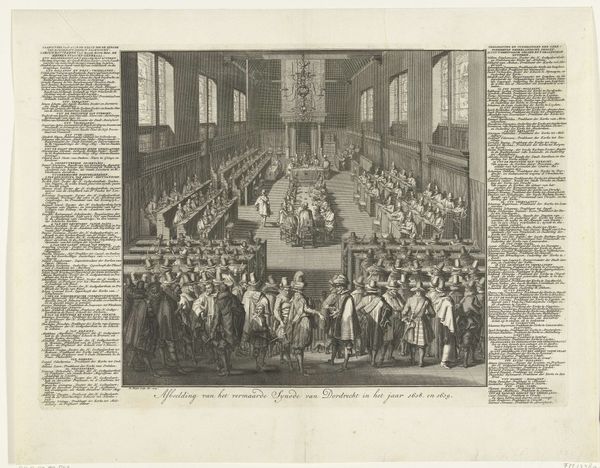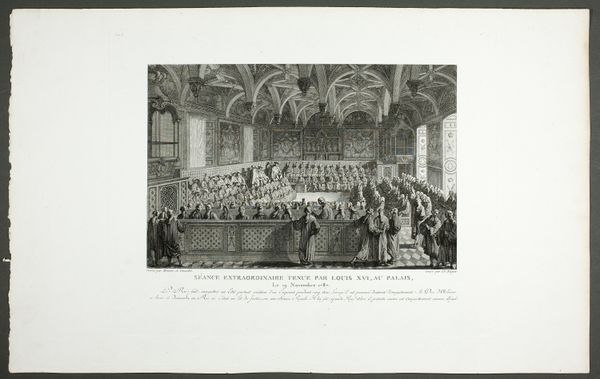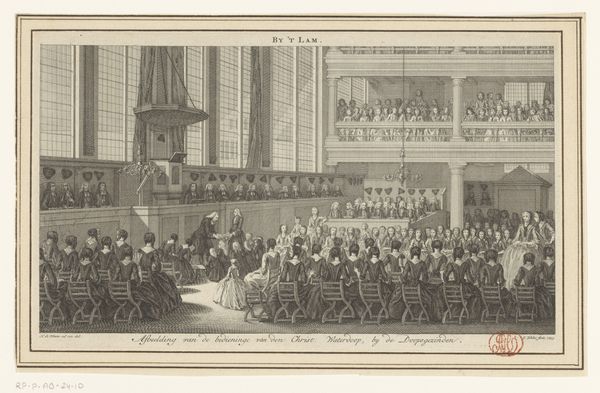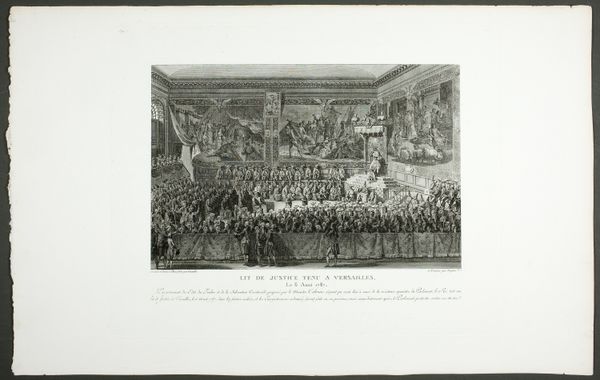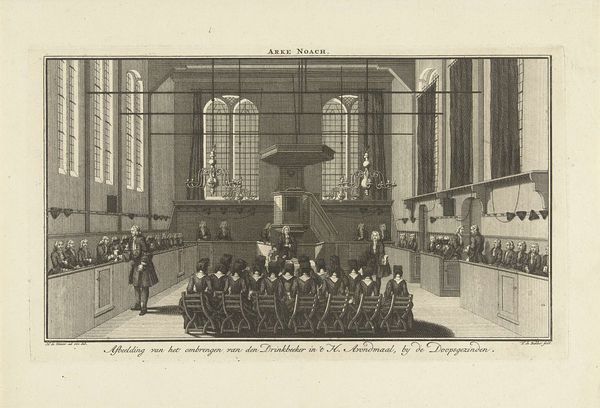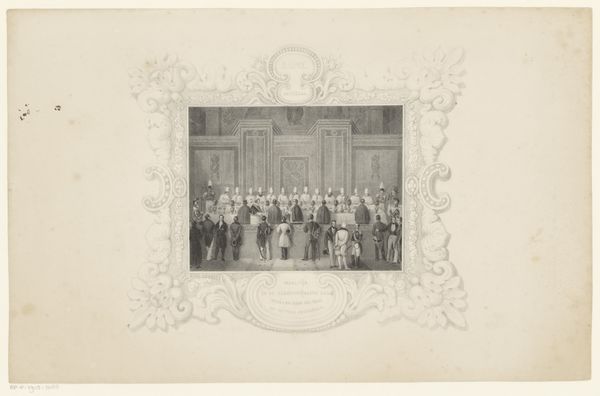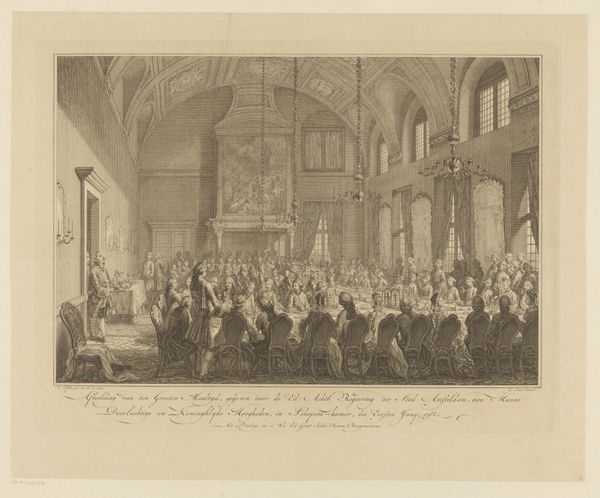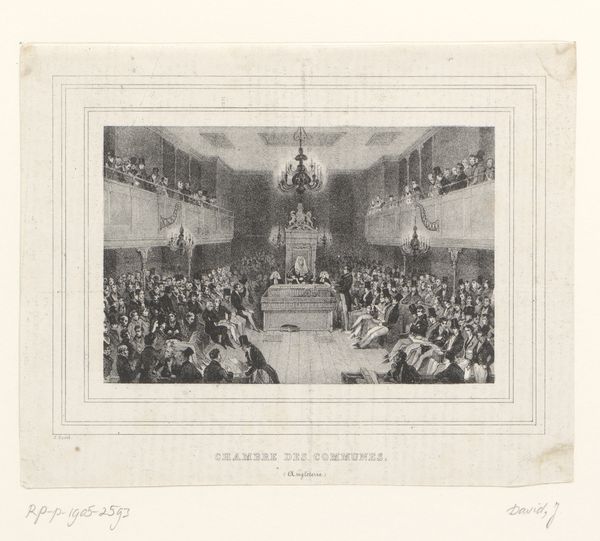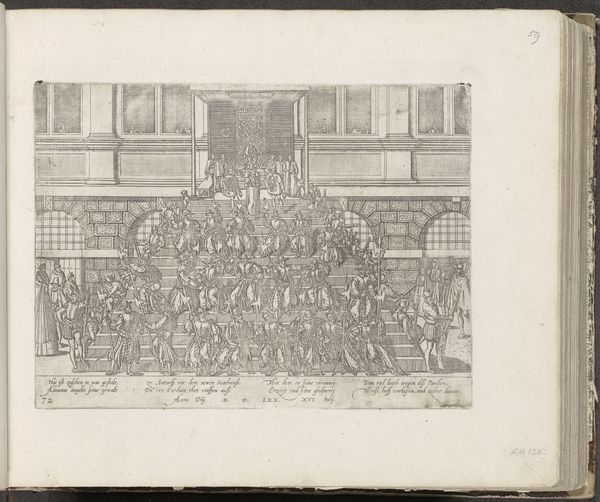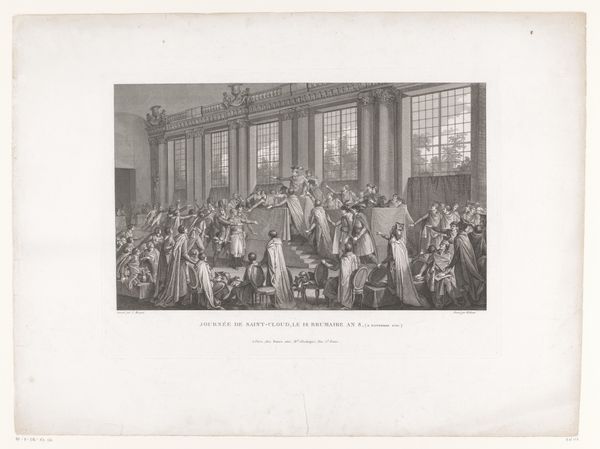
Dimensions: height 281 mm, width 365 mm
Copyright: Rijks Museum: Open Domain
Editor: Here we have "The Opening of the Synod of Dordrecht, 1618," an engraving from the 1850s after an earlier work, currently residing in the Rijksmuseum. The scene feels so staged, so deliberately capturing a moment of…importance. What's your read on this? Curator: Indeed. The staging is everything. This wasn't about spontaneous observation; it’s about constructing a narrative, solidifying a specific historical understanding. What is important is who is represented in the work, how and by whom was it commissioned and displayed? Editor: Commissioned, okay. So, it's more than just a depiction, it’s…advocacy? What story are they trying to sell here? Curator: Precisely! The Synod of Dordrecht was a pivotal moment in Dutch Reformed theology. The engraving, produced much later, serves to legitimize a particular strand of Protestantism. How does the artist visually reinforce this message of authority? Consider the use of perspective. Editor: Ah, the perspective! All lines draw your eye to the elevated platform, emphasizing the speakers. And everyone is arranged so neatly… very controlled. Curator: Exactly. This visual order reflects the desire for doctrinal order. Consider also the political climate of the 1850s, a time of religious revival and debates about national identity. This image then becomes a tool for reinforcing those in power by reminding people of the significance of the religious foundation. Does seeing it this way alter your initial impression? Editor: It does. The seemingly simple scene transforms into something quite politically charged. I initially saw just a historical record. Now I see a historical argument. Curator: And that's often the case with these historical depictions. They're active participants in shaping our understanding of the past. Editor: Fascinating! This reframing really illuminates how art is not always a passive reflection. Thank you!
Comments
No comments
Be the first to comment and join the conversation on the ultimate creative platform.
